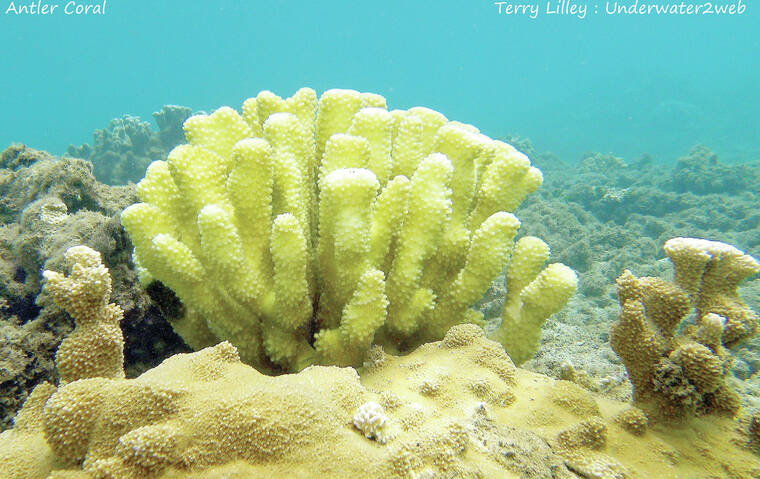Have you noticed lately that there are a lot of beach erosion articles in the newspapers here in Hawai‘i? Almost everyday the news covers a story about a house or road falling into the sea or onto the beach. These articles usually talk about “climate change” and rising sea levels as the causes for massive coastal erosion, but most of the time the articles miss one of the main causes of our beach erosion problems.
From 2012 to 2015 along the North Shore of Kaua‘i, we lost over 80 percent of our shallow water corals. It was devastating to me to shoot video of an entire coral reef diseased and dying, but in the end this disaster became a positive for scientific research.
Along with NOAA, the USGS, Scripps and University of Hawaii, we tried to find out what had killed all the corals but we were never successful at proving anything except DNA testing showed us it was a cyanobacterial infection that caused the corals to die.
What happened next was a real shock to all of us who study coral growth. Shallow water corals produce a skeleton made of calcium carbonate that is similar to the makeup of concrete. The live coral polyps are tiny, soft-bodied invertebrates that look much like an upside down jellyfish.
The polyps have algae in their tissue and they need the sunshine to grow upwards much like a tree in the forest grows upward to get closer to the sun. The hard stony corals grow one on top of the other to make a coral reef that is the largest nature made structure on earth.
Hawaiian corals grow in areas of large surf so they are very unique. They need to have a very strong skeleton so the soft coral polyps don’t get ripped off of the lava reef by the surf. It was once thought that Hawaiian corals only grow about one-half inch a year, but we made an amazing discovery in Kaua‘i when the dead coral reef in 2015 started to grow back! From 2015 to 2022, the corals have almost completely covered the reef in new growth and many of the coral species have grown more than 6 inches a year.
When the corals are healthy they grow upward faster then the sea level is rising. This creates a rock hard structure out on the reef that breaks up the energy of the large surf, which gives us our famous surf breaks. The fast growing coral reef acts like a natural seawall. If the corals are growing upward at a rate of 3 to 4 inches a year and the sea levels are rising only an inch a year, our beautiful beaches will be protected by this natural growing seawall.
On the North Shore of O‘ahu, much of the coral reef has died and the reef is deeper than it used to be. This has allowed the energy of the surf to pass over the reef and tear up the beaches causing homes to fall into the sea. Homeowners want to build concrete sea walls on the beach to protect their homes because the natural seawall on the reef is gone.
We can continue to blame our disappearing beaches on “climate change” or we can work with nature to keep our coral reefs healthy and nature will build her own fast growing seawall out on the reef that will offset the effects of rising sea levels. We need more studies of our coral reefs to figure out what is causing them to die in some areas, and in the long run this will be cheaper than losing our beaches and coastal homes.
Coral reefs can die from sewage leaks, farm chemical runoff, over tourism, runoff from development, military activity and other harmful human activities, but all of these problems can be solved if we do the proper scientific studies out on the reef. Just drive down our coastline and, as a general rule, you will almost never see someone out in the water studying the corals. This needs to change if we are going to save our coral reefs and our beaches the reefs protect.
•••
Terry Lilley is a marine biologist living in Hanalei Kaua‘i and co-founder of Reef Guardians Hawai‘i, a nonprofit on a mission to provide education and resources to protect the coral reef. To donate to Reef Guardians Hawaii go to www.reefguardianshawaii.org.


